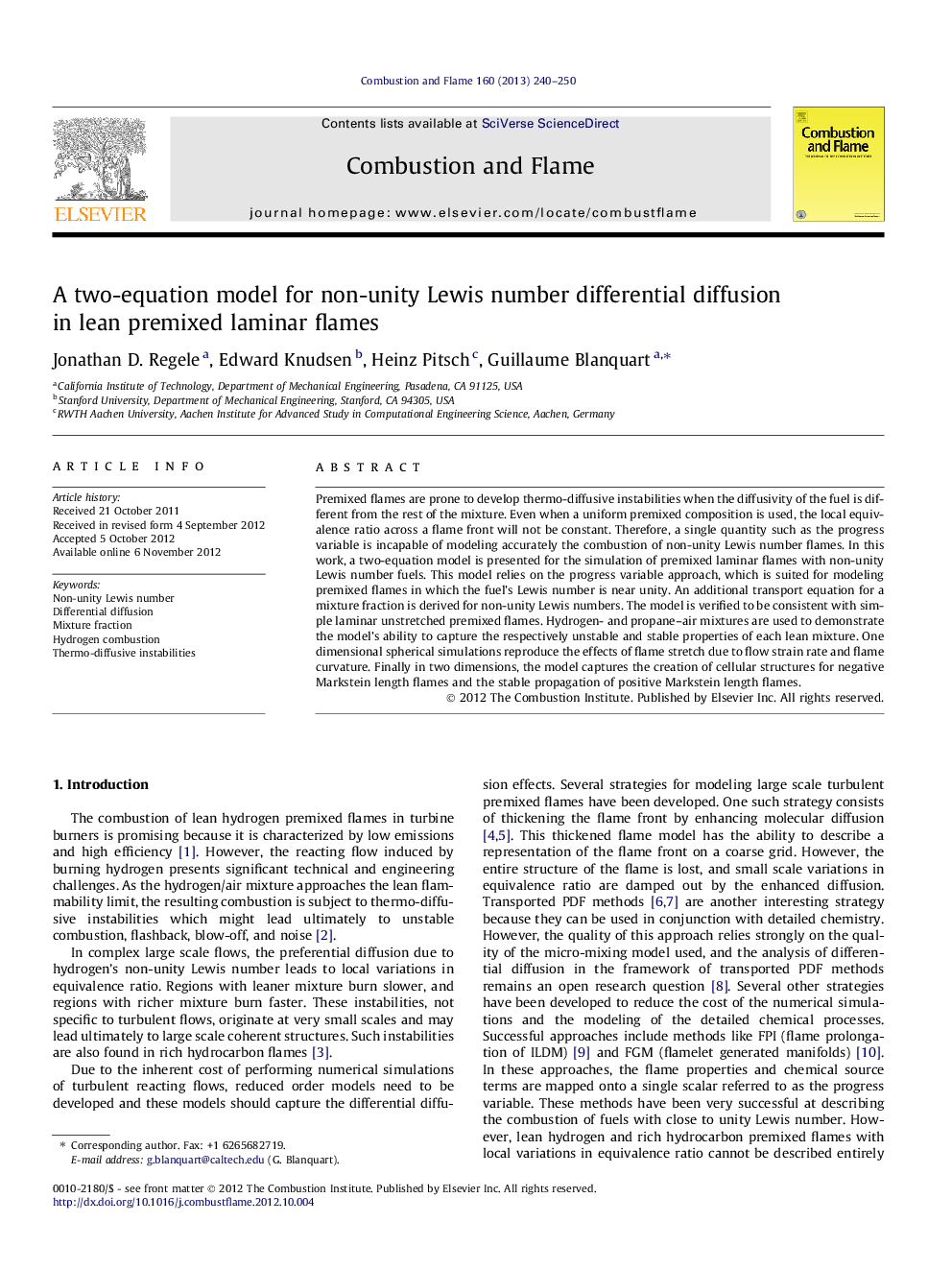| Article ID | Journal | Published Year | Pages | File Type |
|---|---|---|---|---|
| 10264723 | Combustion and Flame | 2013 | 11 Pages |
Abstract
Premixed flames are prone to develop thermo-diffusive instabilities when the diffusivity of the fuel is different from the rest of the mixture. Even when a uniform premixed composition is used, the local equivalence ratio across a flame front will not be constant. Therefore, a single quantity such as the progress variable is incapable of modeling accurately the combustion of non-unity Lewis number flames. In this work, a two-equation model is presented for the simulation of premixed laminar flames with non-unity Lewis number fuels. This model relies on the progress variable approach, which is suited for modeling premixed flames in which the fuel's Lewis number is near unity. An additional transport equation for a mixture fraction is derived for non-unity Lewis numbers. The model is verified to be consistent with simple laminar unstretched premixed flames. Hydrogen- and propane-air mixtures are used to demonstrate the model's ability to capture the respectively unstable and stable properties of each lean mixture. One dimensional spherical simulations reproduce the effects of flame stretch due to flow strain rate and flame curvature. Finally in two dimensions, the model captures the creation of cellular structures for negative Markstein length flames and the stable propagation of positive Markstein length flames.
Related Topics
Physical Sciences and Engineering
Chemical Engineering
Chemical Engineering (General)
Authors
Jonathan D. Regele, Edward Knudsen, Heinz Pitsch, Guillaume Blanquart,
